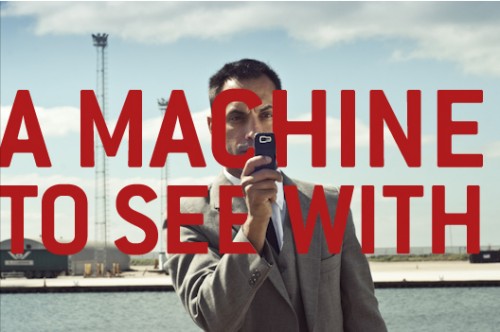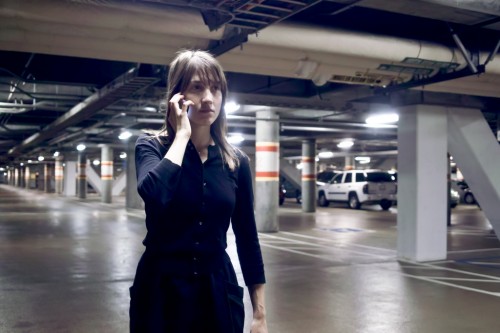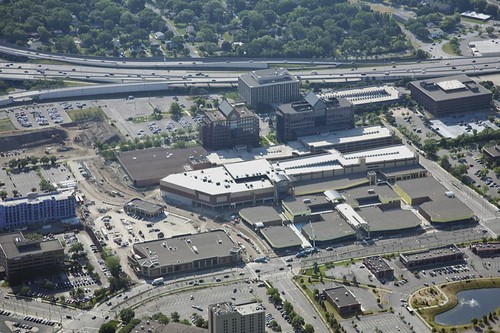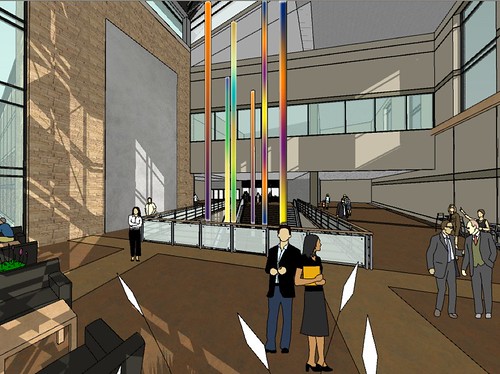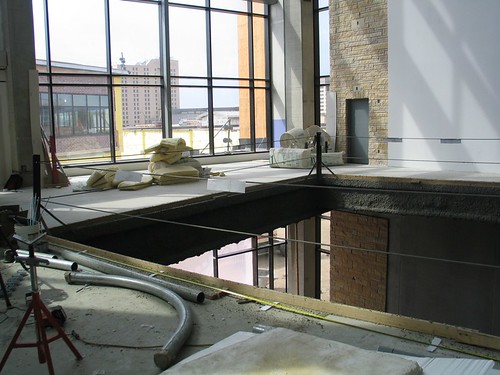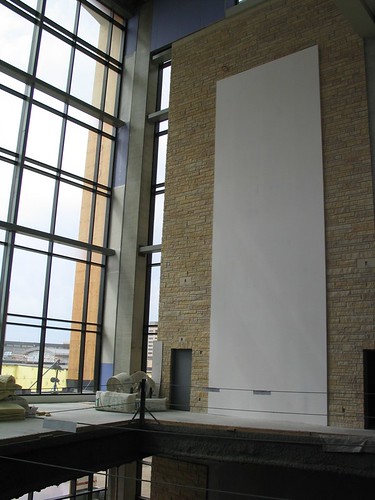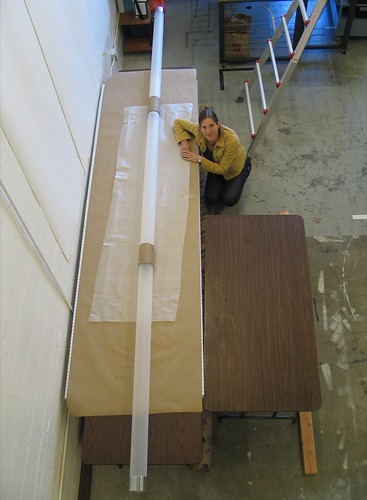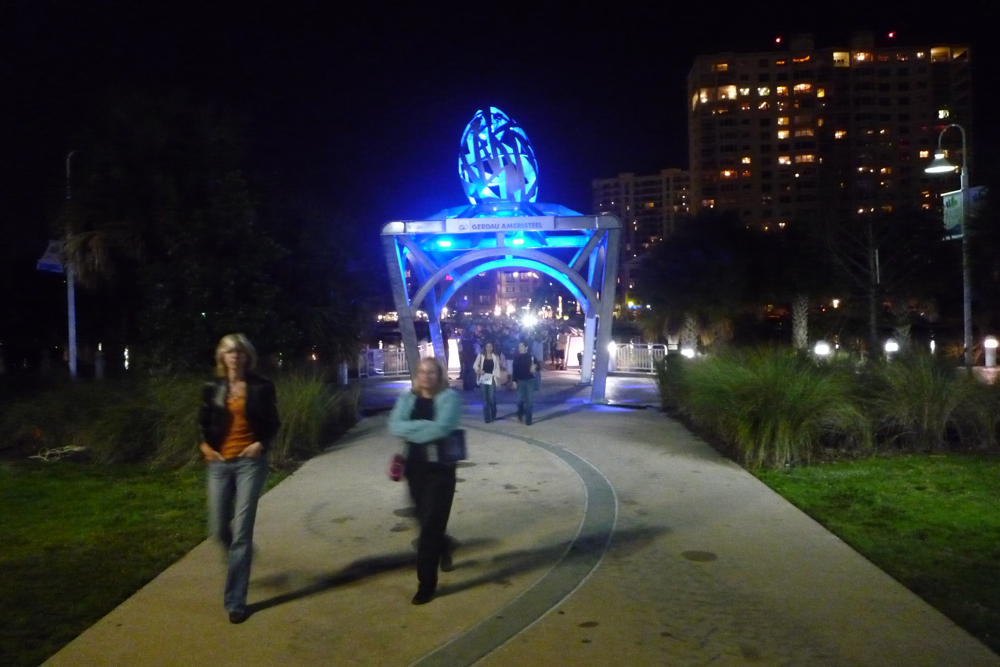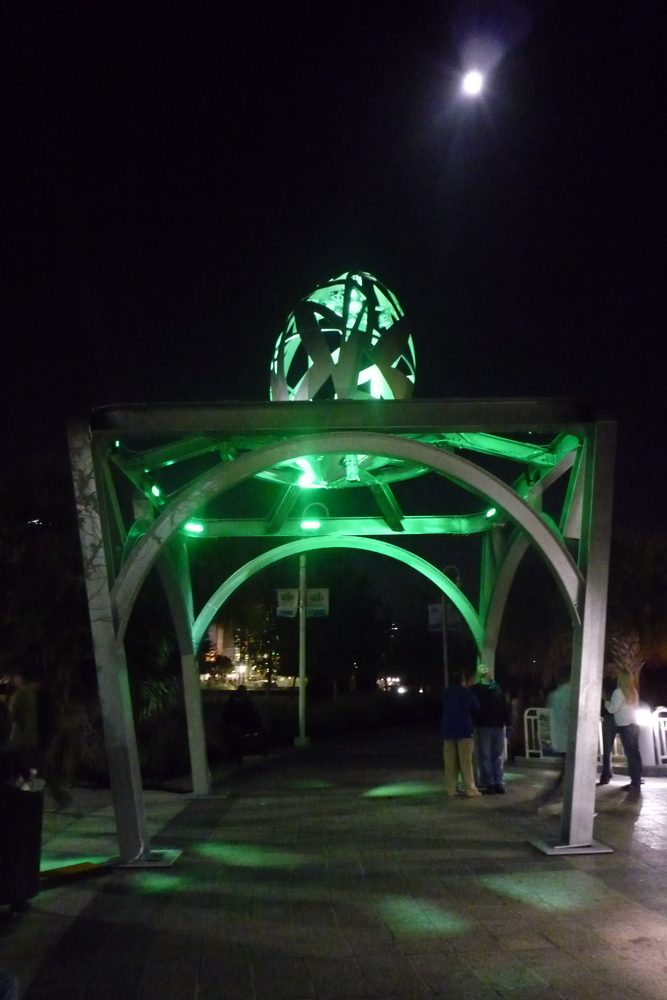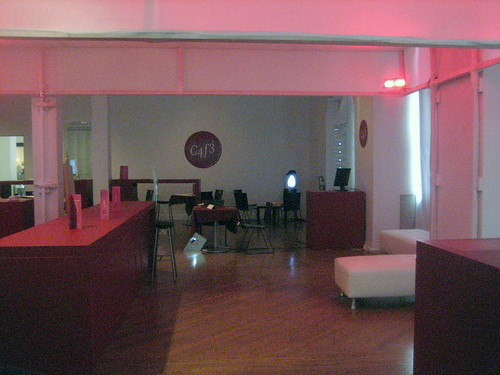Blast Theory’s A Machine to See With is coming to Minneapolis April 15-19, 2011. Buy your tickets now. The experience begins at an appointed location at St. Anthony Main in Minneapolis. Allow 60–75 minutes. It’s worth it.
Blast Theory is a UK-based artist group (led by Matt Adams, Ju Row Farr and Nick Tandavanitj) who use performance, gaming, and interactive media to create participatory experiences that explore the social and political aspects of technology. One of their better-known works is Ulrike and Eamon Compliant, which premiered at the Venice Biennale in 2009 and invited participants to take on the persona of Ulrike Meinhof or Eamon Collins as they walked through the city directed by calls to their cell phone.
While less political in its premise, A Machine to See With is similar in that it’s a cell phone led experience that takes place outside on city streets. I experienced the work when it premiered in San Jose, CA at the 01SJ Biennial last September and was able to observe and participate throughout the concept and testing phases of development. I hesitate to reveal too many specific details about the work because I want to avoid spoilers. This is an artwork that you must experience yourself.
As opposed to a site-specific work that is crafted for one particular geographic location, A Machine to See With (AMTSW) is better classified as a site dependent work. The premise of the work is the same from city to city, but the work isn’t explicitly about responding to a particular location—the narrative is a stencil overlaying a place and the artists are location scouts who scour an area to unearth the characteristics and spaces that support their narrative to the desired effect.
According to Nick Tandavanitj, the artists feel a sense of jeopardy each time they stage the piece because the work is so dependent on geographical details and physical properties of a place. When the artists arrived in San Jose (a city they had never visited—all scouting was done via Google Earth) they knew the narrative would center around a bank, but were still determining how the work would resolve. In Park City, Utah they had to scale the experience to a smaller city and make accommodations for the snow and harsh weather. In Minneapolis (which they did visit in advance), Blast Theory looked at three different locations to serve as the anchor point of the work, and admit that they could have rewritten AMTSW as a different experience at each of the three locations.
The work relies on maintaining an air of intrigue and anonymity to what is going on. Playing yourself, you are challenged to imagine the previously unimaginable and question what and who is behind every corner. Blast Theory clearly designs the work to allow spaces for people to craft their own experience. When I participated, it was left up to me to decide when and how to follow the instructions delivered to my own personal cell phone and at times the work reminded me of the “choose your own adventure” stories I used to love as a child.
Blast Theory is highly adept at blurring genres and mediums. AMTSW connects to urban gaming in that it enables interaction, but the work does not have the structure or clearly outlined goals of a game. In the context of a film festival like Sundance, the work takes on a cinematic element where the city is cast as set and participants as live actors in a reality-based action thriller.
In the end, I left feeling like the work was about taking a risk—not knowing who is playing along, but following directions anyway. As impersonal as the mechanism of phone calls seems to be, AMTSW crafts a finishing point that becomes a starting point to a moment of real personal connection with someone.
A Machine To See With is a Locative Cinema Commission from ZER01 for the 01SJ Biennial, the New Frontier Initiative at Sundance, and the Banff New Media Institute. It is being presented in Minneapolis as part of the Walker Art Center‘s Expanding the Rules of Engagement with Artists and Audiences initiative.
